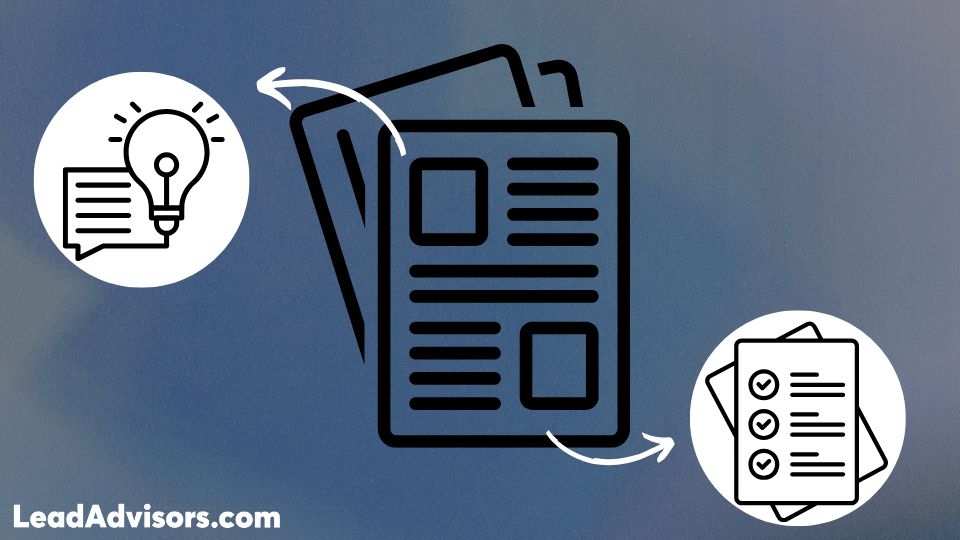Are you an e-commerce or business owner seeking to increase your website’s potential? Technical SEO is the key. In today’s competitive digital landscape, technical SEO is no longer a choice—it’s essential for success.
Technical SEO forms the foundation of your website’s performance and search engine rankings. Additionally, it includes techniques and best practices that optimize your website’s infrastructure, content, code, and functionality, ensuring better visibility to search engines and an exceptional user experience.
Your website’s performance directly affects your bottom line as a business or e-commerce owner. A slow, poorly optimized website frustrates visitors, pushing them toward your competitors. Conversely, a fast-loading, well-optimized website improves user experience, drives targeted traffic, and boosts conversions.
Particularly, in this comprehensive guide, we’ll dive into technical SEO. We’ll provide you with the knowledge and strategies to optimize your website’s performance, surpass your competition, and engage your target audience.
From optimizing website structure and navigation to enhancing page speed, mobile-friendliness, and content, we’ll leave no aspect of web pages unexplored in your quest to master technical SEO. Now, get ready to unlock your website’s full potential.
What Is Technical SEO?
Technical SEO plays a crucial role in optimizing your website for search engines. It involves optimizing various technical aspects of your website to improve its visibility, crawlability, and search engine indexability.
A comprehensive understanding of technical SEO can establish a solid foundation for your website’s overall performance and rankings on search engines. Furthermore, focuses on the backend elements of your website that impact its visibility to other search engines too, it involves optimizing website structure, metadata, HTML code, and web server configurations.
Regardless, implementing technical SEO involves employing SEO best practices that facilitate search engines in efficiently crawling and comprehending your site architecture and content.
Additionally, Technical SEO directly influences how search engines perceive and rank your website. A well-optimized website increases the chances of search engines recognizing its relevance and quality.
Proper implementation of technical SEO can improve your website’s rankings, organic traffic, and overall visibility in how search engines index their engine result pages (SERPs).
How to Ensure Effective Technical SEO?
Generally, to ensure effective technical SEO implementation, here are some best practices and guidelines to follow:
- Create a logical and organized structure with clear navigation to facilitate user experience and search engine crawlers.
- Optimize meta tags, including title tags and meta descriptions, with relevant keywords to improve search engine visibility and attract users.
- Enhance website loading speed by optimizing image sizes, reducing CSS and JavaScript file sizes through minification, browser caching, and leveraging a content delivery network (CDN).
- Leverage structured data and schema markup techniques to offer supplementary context to search engines. Rather, this approach enhances the likelihood of achieving featured snippets and rich results.
- Design your website to be responsive and mobile-friendly, providing an optimal user experience across different devices.
- Ensure that search engines can easily navigate and index your website. Creating and submitting a sitemap, effectively utilizing robots.txt, and addressing any crawl errors that may arise are essential.
Read More: 5 Best On-Page SEO Tools in 2023
Website Structure
A well-structured website with user-friendly navigation is vital for users and search engines. It lets visitors easily find the needed information and helps search engine crawlers understand and index your content effectively.
Moreover, well-structured website enhances user experience by providing clear pathways and intuitive navigation. It helps visitors navigate your site, discover relevant content, and take desired actions. Specifically, an intuitive and user-friendly interface leads to extended visit durations, decreased bounce rates, and enhanced engagement metrics. Additionally, this tells that your website provides valuable and relevant content to search engines.
From a search engine perspective, a well-structured website allows crawlers to access and understand your content efficiently. Significantly, it ensures that all pages are reachable and indexable, maximizing your website’s visibility in search results.
A clear website structure also helps search engines establish the hierarchy of category pages and relationships between different pages, making it easier to determine how multiple pages will rank the same page for the relevance and authority of your content.
Optimizing your website’s structure is essential for improving search traffic, crawlability, and indexability, ensuring that search engines can effectively navigate and understand your site’s content. To achieve this, you can implement several key site architectures and strategies.
- Creating a logical hierarchy is crucial. This hierarchical arrangement helps search engines comprehend your website’s overall structure and topical focus, leading to better indexing and ranking.
- Optimizing your URL structure. Using descriptive and keyword-rich URLs provides search engines with a clear indication of the content on each page. This helps search engines understand your pages’ relevance and improves user experience and accessibility.
- Breadcrumbs serve as navigational aids, displaying the user’s location within your website’s structure. They offer contextual information to users and search engines, helping visitors understand your site’s hierarchy and easily navigate to previous pages.
Navigation Optimization
When optimizing your own website’s navigation, there are key tips to consider for your website URL, structure, breadcrumbs, broken page links, and internal linking:
- Maintaining consistency in your URL structure is important. Choose whether you want to use your domain’s www or non-www version and decide whether to include a trailing slash.
- Incorporating relevant keywords into your URL structure can benefit your search engine optimization efforts. A well-optimized URL can indicate the page’s content and improve search engine visibility and user experience.
- Optimizing internal linking is vital for helping search engines discover and navigate your content effectively. When creating internal links, use descriptive anchor text that provides context about the linked page, enhancing search engine understanding and user navigation.
You May Also Like: Press Release Best Practices
Page Speed Optimization
Page speed is crucial in both search engine optimization and user experience. From an SEO perspective, search engines like Google consider page speed a ranking factor for individual pages.
Straightaway, websites with fast loading times tend to receive higher rankings in search results. Search engines prioritize site speed for search engine spiders, giving it precedence over ensuring a smooth and enjoyable user experience.
Regarding user experience, page load time and speed directly impact visitor satisfaction and engagement. Subsequently, a slow-loading website frustrates users, leading to higher bounce and lower conversion rates.
On the other hand, a fast-loading website enhances user satisfaction, as page load time increases engagement and improves overall user experience.
To measure site speed and improve page load times, consider the following:
- Google’s Page Speed Insights tool provides valuable insights into your website’s performance. It evaluates your page speed on mobile and desktop devices, offering recommendations for improvement.
- Optimize your server’s response time to minimize delays in delivering website content. Ensure your hosting provider offers fast and reliable server performance.
Optimizing various elements on your website can significantly improve web page speed. Here are some techniques to consider:
- Compress and resize images without sacrificing quality. Use appropriate image formats (such as JPEG or PNG) and implement lazy loading to load images only when they become visible.
- Reduce the file size of CSS and JavaScript files by removing unnecessary code, comments, and whitespace. Combine multiple files into one to minimize HTTP requests.
- Set up caching rules on your server to instruct browsers to store static resources like images, CSS files, and JavaScript files. This reduces the need for repeated downloads when visitors navigate through your website.
You May Also Like: How SEO Content Can Boost Your Website’s Ranking
Mobile-Friendliness
Mobile-friendliness is crucial for both search engine optimization and user engagement. With most internet users accessing websites via mobile devices, search engines prioritize mobile-friendly websites in their rankings. A mobile-friendly website increases your chances of ranking higher in mobile search results, driving more organic search traffic back to the pages on your site.
Furthermore, a mobile-friendly website enhances user engagement and satisfaction. Visitors anticipate smooth experiences on various devices, and in case your website lacks mobile optimization, users might face challenges such as sluggish loading speeds, unresponsive design, and navigation difficulties.
This could result in increased bounce rates and decreased conversions. In contrast to web pages, a mobile-friendly website provides a smooth user experience, encouraging longer visit durations and higher engagement rates.
Read More: The Types of Marketing For Your Brand (2023)
Responsive Design
Responsive design is an approach that ensures your website adapts and displays properly on various devices and screen sizes. It provides numerous advantages for both users and SEO:
- The responsive design guarantees a consistent user experience, regardless of the device employed to access your website. It automatically adjusts the layout, content, and elements to fit different screen sizes, providing a seamless and user-friendly interface.
- Search engines value responsive design as it allows for a single URL and consistent content across all devices. This simplifies the indexing and ranking, leading to better search engine visibility and improved SEO performance.
Based on ExactTarget’s 2014 State of Marketing report, it is evident that business owners, in principle, have recognized the significance of mobile in their operations. The report highlights several findings that support this notion:
- About 80% of marketers who employ mobile marketing are of the opinion that it either already has or will enhance their return on investment (ROI).
- Approximately 30% of marketers incorporate location-based technology into their overall marketing strategy.
- Nearly 47% of marketers have developed a mobile application.
Although not directly related to having a mobile-optimized website, is that 42% of the respondents admitted to rarely or never utilizing mobile design in their emails.
Read More: How to Make a Content Calendar in 6 Easy Steps
Technical SEO for Content
Technical SEO is the foundation that supports your content optimization efforts on block search engines. It ensures that search engines can effectively crawl for, understand, and index important pages with rich snippets of your content. By implementing technical SEO best practices, you provide search engines with the information and structure to rank your content accurately.
Moreover, technical SEO enhances user experience by optimizing elements that affect how content from search queries is presented in search results. This includes meta tags, headings, internal links, and structured data, which we will explore in the following sections.
Meta tags, headings, and structured data are crucial components of content optimization. Here’s how you can optimize them:
- Craft compelling meta titles and descriptions that accurately represent the content on each page. Include relevant keywords naturally and ensure they are enticing to users. Also, optimize meta tags for length to avoid truncation in search engine results pages (SERPs).
- Use heading tags (H1, H2, H3, etc.) to structure your content and provide a hierarchy. Ensure that each page has a single H1 tag representing the main heading, and use H2 and H3 tags for subheadings. Incorporate relevant keywords in headings to signal content relevance to search engines.
- Implement structured data markup, such as schema.org vocabulary, to provide additional context about your content. This aids search engines in comprehending the intent and significance of your content, potentially leading to the display of rich snippets and enhanced visibility in search engine results pages (SERPs).
Read More: 7 Proven Strategies to Increase Organic Traffic to Your Website
Technical SEO Audit and Monitoring
Significantly, conducting regular technical SEO audits is essential for your site structure for several reasons. First, audits help identify and address any issues that may hinder your website’s performance in search engine rankings.
Technical optimization and SEO audits also contribute to improving user experience. By optimizing your website’s technical aspects, such as page speed, mobile-friendliness, and your site’s content structure, you provide visitors with a seamless and engaging browsing experience.
As a result, this could result in heightened user satisfaction, extended visit durations, and enhanced conversion rates.
To perform a comprehensive technical SEO audit, follow these key steps:
- Use crawling tools like Screaming Frog or DeepCrawl to analyze your website’s structure, URLs, and internal links. This provides valuable insights into any crawlability issues, broken links, or duplicate content that must be addressed.
- Review meta tags, headings, URLs, and keyword usage across your website. Ensure that meta titles and descriptions are optimized, headings are appropriately structured, and URLs are clean and descriptive. Identify any keyword cannibalization or missing on-page optimizations.
- Analyze page load times, mobile-friendliness, and responsiveness. Use tools like Google PageSpeed Insights and Mobile-Friendly Test to identify areas for improvement. Enhance website performance by implementing responsive design techniques, optimizing images, and minimizing CSS and JavaScript files.
You May Also Like: How to Eliminate Duplicate Content on Your Website
How LeadAdvisors Can Help with Technical SEO
LeadAdvisors excels in optimizing Technical SEO, offering invaluable assistance to enhance your online presence. As a prominent digital marketing agency, their expertise ensures organization and optimization of your content calendar.
Nevertheless, by taking advantage of their proficiency in Search Engine Optimization (SEO), LeadAdvisors becomes a strategic partner in boosting traffic to your social media platforms and website. Their approach understands Technical SEO and lets them fine-tune your online strategy for optimal performance. With LeadAdvisors, navigate the complexities of Technical SEO seamlessly and elevate your digital presence with confidence.
Book a free consultation now!
Conclusion
Mastering technical SEO is essential for boosting your website’s performance and driving organic traffic. Throughout this comprehensive guide, we have looked into various aspects of technical SEO and provided valuable insights and strategies for optimization.
Recognizing the ongoing nature of keyword research and technical SEO is crucial. As search engine algorithms evolve, new best practices and optimization techniques emerge. Therefore, we encourage you to implement the strategies discussed in this guide and continuously monitor search results and your SEO efforts.
Remember, technical SEO is just one piece of the puzzle. A comprehensive SEO strategy encompasses various elements, including content creation, link building, and social media presence. For expert guidance and support in maximizing your SEO potential, we recommend contacting LeadAdvisors.

















